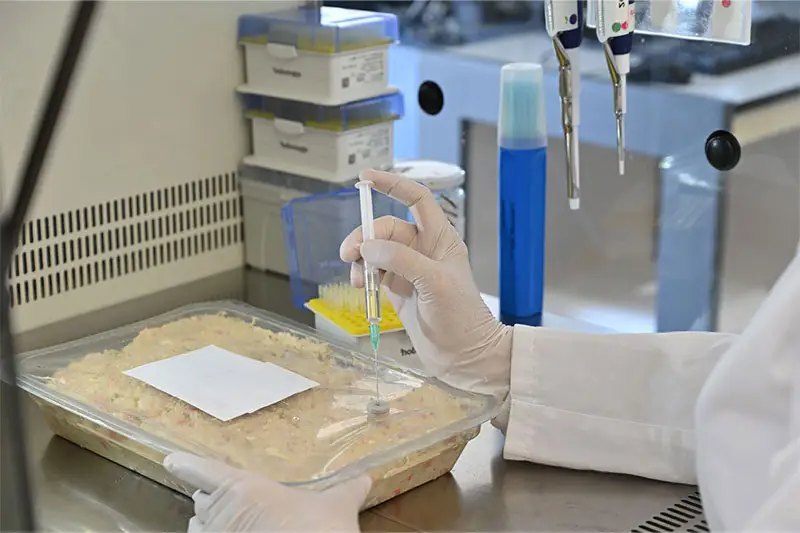Microbial Contamination Testing in Natural Cosmetic Products
The demand for natural cosmetic products has grown significantly as consumers increasingly seek products that are free from synthetic chemicals and artificial fragrances. However, this shift towards naturality does not negate the need for rigorous testing to ensure product safety. Microbial contamination remains a critical concern in cosmetics due to the potential health risks it poses. This section focuses on the importance of microbial contamination testing specifically within natural cosmetic products.
Microbial contaminants can enter cosmetics through various means, including raw materials, packaging, and manufacturing environments. In natural cosmetics, ingredients are often derived from plants or other organic sources, which may harbor microorganisms if not properly processed or stored. Common pathogens like Bacillus cereus, Listeria monocytogenes, and Escherichia coli can pose serious health hazards when present in cosmetic products.
The testing process for microbial contamination involves several steps, starting with the collection of samples from finished products or raw materials. Samples are then prepared according to standard procedures outlined by organizations such as ISO 22716:2013, which provides guidelines specifically for microbiological examination of cosmetics. Once prepared, the samples undergo culture-based methods and molecular techniques to identify and quantify microorganisms.
It is crucial to understand that natural products can contain beneficial microflora that are part of their intended composition. Therefore, testing must differentiate between harmful pathogens and acceptable flora. This differentiation requires experienced personnel who understand both microbiological safety standards and the unique characteristics of natural cosmetics.
The results from microbial contamination tests provide essential data for quality assurance teams to make informed decisions regarding product formulation, ingredient sourcing, and process optimization. By identifying potential sources of contamination early in the development or production cycle, companies can minimize risks associated with microbial growth during storage or use by consumers.
Industry Applications
| Application Area | Description |
|---|---|
| Bio-based Cosmetics | Testing for microbial contamination in products derived from plant extracts or other organic materials. |
| Organic Cosmetics | Evaluating the safety of cosmetics labeled as 'organic' by ensuring no harmful microorganisms are present. |
| Sustainable Beauty Brands | Ensuring compliance with international sustainability standards regarding microbial content in natural ingredients. |
| Natural Skincare Products | Monitoring the quality of skincare products made from botanicals and other natural components to prevent microbial spoilage. |
The industry applications table highlights how microbial contamination testing is vital across different segments within the cosmetic sector. Whether it's bio-based, organic, or sustainable beauty brands, ensuring product safety through rigorous microbiological examination is paramount.
Why Choose This Test
Choosing microbial contamination testing for natural cosmetic products offers numerous benefits that go beyond mere compliance. First and foremost, it protects the reputation of your brand by safeguarding against recalls due to health hazards associated with contaminated cosmetics. Consumer trust is built on a foundation of safety, and demonstrating adherence to stringent quality control measures reassures customers about the integrity of their purchases.
Secondly, microbial testing helps in maintaining regulatory compliance. Regulatory bodies like the FDA (USA), EU Cosmetics Regulation, and others have strict guidelines regarding the presence of certain microorganisms in cosmetics. Non-compliance can lead to severe penalties including product bans or withdrawal from markets. By conducting regular tests, companies ensure they meet these stringent requirements.
Moreover, microbial contamination testing aids in process improvement. Identifying where contaminants enter the manufacturing chain allows for targeted interventions aimed at preventing future occurrences. This proactive approach not only enhances production efficiency but also reduces costs associated with potential recalls and rework.
In addition to these tangible benefits, implementing robust testing protocols contributes positively towards sustainability efforts within your organization. Natural cosmetics often emphasize eco-friendly practices; ensuring that your products are free from harmful bacteria aligns well with broader green initiatives aimed at reducing environmental impact.
Environmental and Sustainability Contributions
The practice of microbial contamination testing in natural cosmetic products plays a significant role in promoting sustainability within the industry. By ensuring that only safe ingredients are used, companies contribute to minimizing waste generation and resource depletion linked with substandard product recalls or rejections.
Furthermore, adhering to stringent microbiological examination standards supports biodiversity conservation by discouraging the use of potentially harmful chemicals during processing. This approach fosters healthier ecosystems both upstream in raw material sourcing and downstream throughout supply chains.
To further enhance sustainability credentials, incorporating advanced technologies such as next-generation sequencing (NGS) into microbial analysis can provide deeper insights into microflora composition. Such information helps tailor formulations more precisely while reducing reliance on broad-spectrum antimicrobial agents that could harm beneficial organisms in the environment.





